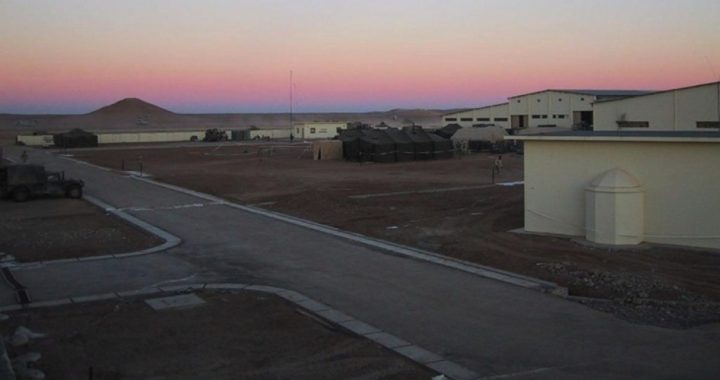
When the Department of Defense issued its annual Real Property Inventory, Dmitry Orlov, an investigative reporter and author of The Five Stages of Collapse, was curious to see how the American empire was doing. To his astonishment, looking back as far as 1957, Orlov discovered that it is shrinking, declining sharply last year and continuing a trend of shrinkage going back for more than a decade:
The US may still have control of its domestic and territorial bases, but it has suffered huge losses of foreign military bases and acreage. Since reaching “peak foreign military bases” in 2004, the US now has just 64% of them — a loss of over a third in a decade! In the case of acreage the US retains 69% of its peak acreage in 2006, so it has lost 31% of its foreign military acreage — also close to a third. If you want to guess at what’s behind these numbers, you might want to look at them as the fallout from disastrous US foreign policy,
Orlov offers another possible reason: The cost of building a worldwide empire is now generating negative returns on investment thanks to the interest being charged on the debt incurred to build it. Regardless of the reason, says Orlov, “the trend is unmistakable,” and he predicts the shrinkage will continue over the next 20 years, noting that “the collapse does not have to be precipitous. It could be gradual, theoretically.” Orlov continued:
But a moment may arrive well before empire is all gone when the suspension of disbelief that is required to keep US government finances from cratering ceases to be achievable — regardless of the level of propaganda, market distortion, or US officials smiling, waving and lying in front of television cameras. Thus, we have two estimates. The first estimate is objective and based on US government’s own data: two decades or less. But we also have room for an estimate that is subjective yet bracketed: anywhere between later today and two decades (or less) from now.
Orlov has company in his outlook: Harvard University professor Niall Ferguson. In January 2008 Ferguson compared the American empire to that of the Ottoman Empire in an article in the Financial Times, noting that as the Turks in the 1870s were forced to sell off valuable assets such as the Suez Canal and valuable revenue streams to their bondholders, the U.S. is being forced to sell various assets here. According to the latest “Quarterly Update on Foreign Ownership of U.S. Assets” published by the Council on Foreign Relations, the ownership of financial assets by foreign interests is approaching 140 percent of the United States’ entire economic output for one year. So far most of those purchases have been voluntary, but base closures and shrinkage by the Department of Defense are part of the sell-off envisioned by Ferguson. As he noted:
An overextended empire sought to cope with an external debt crisis by selling off revenue streams to foreign investors. The empire that suffered these setbacks in the 1870s was the Ottoman Empire. Today it is the US.
The shrinkage is continuing. Instead of selling off revenue streams, the Department of Defense is cutting their losses. The pressure to stop the hemorrhaging is so great that back in March Defense Secretary Chuck Hagel was seeking to close foreign military installations without informing Congress first.
Historians may look back to the first decade of the 21st century as the peak of the American empire, triggered by that hemorrhaging and the recognition that it simply couldn’t continue without bankrupting the country.
Photo of FOB Rhino (Camp Rhino) in Afghanistan
A graduate of Cornell University and a former investment advisor, Bob is a regular contributor to The New American magazine and blogs frequently at www.LightFromTheRight.com, primarily on economics and politics.



